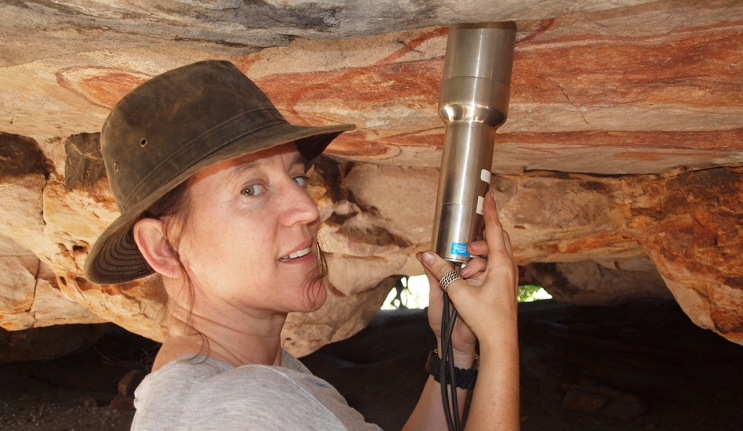
RESEARCH NEWS
Ice-aged Aboriginal art uncovered in the Kimberley
What may be the longest, most impressive and complex rock art sequence anywhere in the world has been found in the remote Kimberley region of Western Australia.
Evidence from recent excavations in the northwest Kimberley show that humans occupied the northern coastline as early as 36,000 years ago.
The art of the region could potentially challenge Western Europe as the location for the production of the world’s earliest rock art, but establishing the antiquity of the Kimberley art has eluded archaeologists for decades.
Collaborative venture
Macquarie University’s Dr Kira Westaway worked alongside researchers from the University of New England and the University of Wollongong, as well as Aboriginal Traditional Owners based in Kandiwal and Kalumburu on the collaborative project.
Focused on the rugged Lawley and Mitchell river basins, team members recorded more than 200 sites over a three-year period, providing a broad platform from which to establish the antiquity of the art.
Researchers trialed three different dating techniques on a range of rock art styles with kangaroo and yam-style motifs. The most successful technique proved to be a light sensitive dating method called optically-stimulated luminescence (OSL). It was applied to sand grains found within mud wasp nests, which adhere to many of the art motifs and become fossilised over time, creating a type of time capsule.
As OSL measures the period of time since the grain of sand was last exposed to sunlight, the resulting age records the time when the nest was built on top of the painting, thus providing a minimum estimate for the time that the artist could have painted the image.
Geochronologist Dr Westaway comments that “mud wasps really are the most helpful insects – they build nests on top of the art using grains of sand that I can date without damaging the art itself”.
Ancient artists
The results confirm that the origin of the northwest Kimberley rock art assemblage was painted just after the height of the last glaciation – 16,000 years ago.
“Our results demonstrate that at least some phases of Kimberley art are of great antiquity – and may date to a time when sea levels were lower, the continent was much larger and environmental conditions were more challenging – perhaps the oldest art is now submerged off the Kimberley coastline.”
As part of a citizen science approach to rock art research in the Kimberley region, 20 Aboriginal community members from Kandiwal and Kalumburu participated in the project, playing a central role in developing sampling strategies and ensuring sampling procedures were non-destructive.
Commenting on the dating results, Cathy Goonack, Chair of the Wunambal Gaambera Aboriginal Corporation stated that “our rock art brings visitors from all around Australia, and around the world, to the Mitchell Plateau. They want to look at our art and hear our stories; now we’ve got a good science story that we can tell people as well. We’ll also use this information to help us look after our art”.